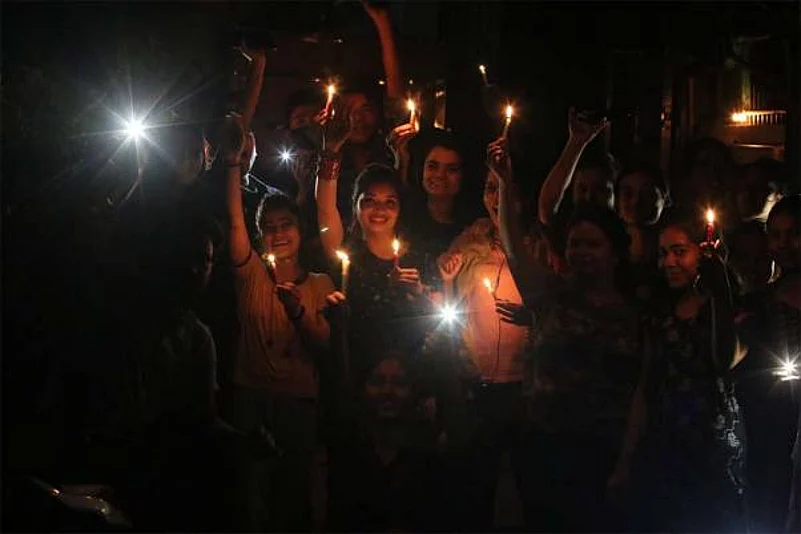It started in Italy. Locked indoors as the mysterious virus raged outside, Italians stepped out into their balconies and sang and played musical instruments. This spontaneous expression of solidarity in terrible times became a state-endorsed gesture of solidarity when Prime Minister Narendra Modi asked its citizens to clap and clang thalis in appreciation of medical professionals and others fighting coronavirus pandemic.
In England, people began clapping in unison to thank the NHS workers. Once most states in the US declared shelter-in-place and victim toll began to rise along with dwindling Personal Protection Equipment (PPE) for the medical fraternity, New Yorkers began clapping in appreciation of the frontline workers at 7pm every day. It soon spread to other cities. Instead of clapping, Chicago chose to burn a candle outside front doors or balconies to show appreciation for the medical workers, grocery store workers and others deemed essential. Never one to be left behind on the latest trend, PM Modi asked the country to light candles or diyas or even a torch for 9 minutes at 9pm on April 5 to show solidarity with the doctors and nurses.
It must have been uplifting for the medical fraternity to be recognized and appreciated. But appreciation has probably never rung so hollow. When the doctors and nurses, who are working to treat coronavirus patients, return to their shifts, they face several challenges – working without PPE, looking after the rising number of patients who may be the carrier of the deadly virus, and making gut-wrenching choices – who gets the ventilator and who doesn’t. All this with little equipment to protect themselves, and very little hope of getting fresh supplies in the horizon. Grocery store workers, custodial staff, postal employees, agricultural workers, and transport workers cannot stay home, they work for below sustenance pay, and often do not have PPE. The situation is the same whether in India, the US, Italy, or the United Kingdom.
Gestures of thanks through sound or light, however sincere, are just gestures. They do not change the material conditions for the recipients of gratitude. In the pandemic-stricken world, these gestures do not help produce more ventilators. They do not bring N95 masks for medical personnel. The value of these gestures of gratitude is symbolic, rather than practical. Like social media activism, these symbolic gestures do not require much effort. They may be uplifting for those practicing them. They may even be gratifying to its recipients, but they do not in themselves improve things.
Yet the gesture is attractive because it creates an illusion of action without requiring a commitment to change. After all transformative action is time-consuming, difficult, and slow. Ask any activist. When symbolic gestures are timed and done on a mass scale, such as turning off lights and lighting candles, they create a sense of imagined community. At a time when the physical community is absent, this illusory sense of belonging is reassuring.
The COVID-19 pandemic reveals an enthusiasm for the symbolic over the concrete. Effusion of gratitude contrasts with the complete disregard for those who are essential to our survival: doctors, nurses, custodial staff, grocery workers, postal workers, delivery agents, food industry workers. Lighting candles or clapping would not be a problem if it was not accompanied by disregard of injunctions to remain at home, hoarding of medical supplies. These practices put our medical workers and other essential services workers at risk. Acknowledgment of the valuable work of these professionals is of little use if we elect governments that put businesses over people, create and forge division, and put ideology over science. Clapping to commend the NHS doctors and nurses in England has little meaning if policies defunding the NHS is encouraged by the public. Lighting candles in the USA is of little use if we continuously elect officials who do not believe in healthcare as a human right, or in paying family or medical leave.
It is not a problem to recommend citizens to light candles for 9 minutes. But it is a problem if that is not accompanied by concrete measures. In the absence of any organised plan to tackle the pandemic, impassioned speeches urging the performance of symbolic gestures distract the public from the government’s lack of preparedness. It creates an illusion of agency in the public when traditional notions of action are useless against a contagious virus. When symbolic gestures are accompanied by bogus scientific claims, they are a strategy to hide incompetence.
The Indian government’s abdication of any effort to address reality cannot be dismissed as a third-world phenomenon. It is matched by the UK where Prime Minister Boris Johnson flouted physical distancing and did not impose shelter in place till very recently; and the USA where the federal government has withdrawn from any effort to help people, leaving the task to state and local governments. The abdication of any action by the state to tackle the horrible reality is a typical neo-liberal approach. In a neoliberal state the government’s role in the wellbeing of its citizens is minimal. Thus, people in India are left ringing bells and lighting candles, while migrant workers are forced to walk home, making a mockery of any kind of social distancing. In the USA, the center disbanded the pandemic task force in 2018, refuses to take charge of providing equipment. So the states bid against each other in the free market for ventilators and mask while private citizens make do-it-yourself masks for themselves from scraps of fabric.
The point is not to abandon symbolic acts, especially if they provide comfort. The problem is in mistaking symbolic gestures alone to be adequate measures to the needs of the hours. Not recognising when the symbolic gestures are used to manipulate people and hide government callousness is a terrible problem.
(Sohinee Roy is Associate Professor, North Central College, Illinois. Views expressed are personal.)
















